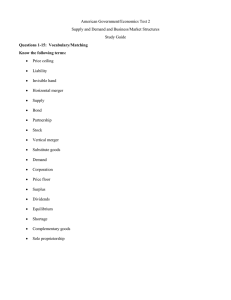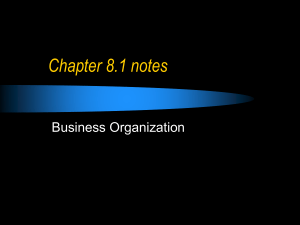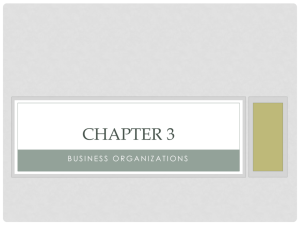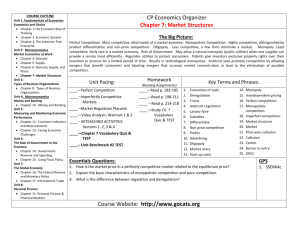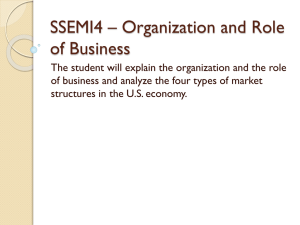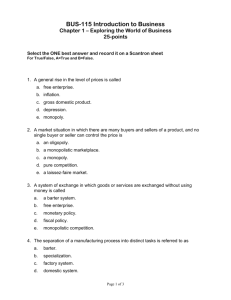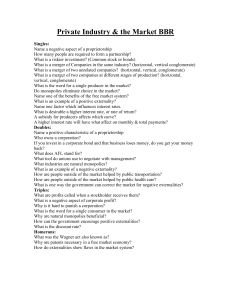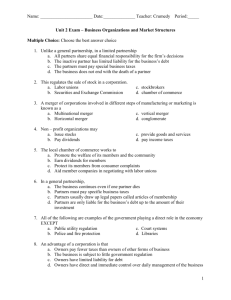BUSINESS ORGANIZATIONS AND MARKET STRUCTURES
advertisement
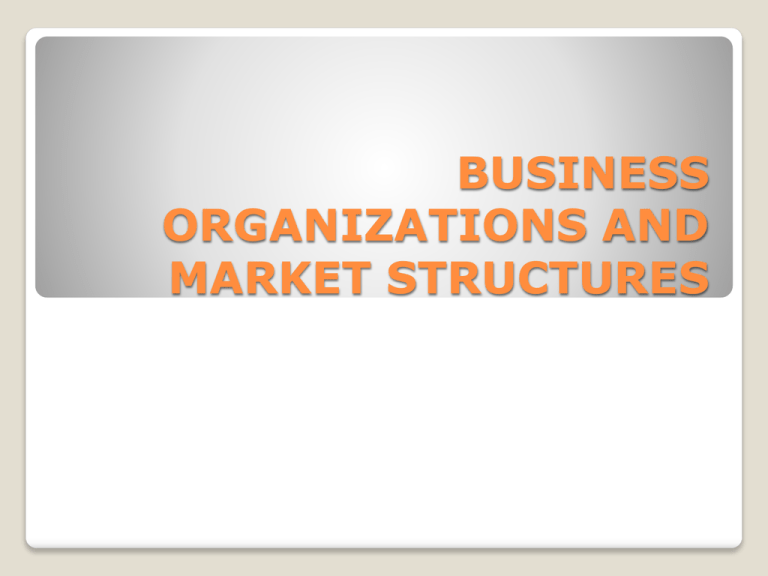
BUSINESS ORGANIZATIONS AND MARKET STRUCTURES There are three main forms of business organization in the United States – the sole proprietorship, the partnership and the corporation Forms of Business Organization A sole proprietorship is a business owned by one person. Advantages include ease of starting up and management, owner receives all the profits, tax advantages and pride of ownership. Disadvantages include unlimited liability, difficulty in raising financial capital and limited life. Sole Proprietorship A partnership is a business jointly owned by two or more persons. Advantages include ease of management and establishment, additional financial capital and tax advantages. Disadvantages include unlimited liability, limited life and potential conflicts between partners. Partnerships A corporation is a form of business organization recognized by law as a separate legal entity having all the rights of an individual. Advantages include ease of raising financial capital, professional managers hired by the Board of Directors, limited liability, unlimited life. Disadvantages include the difficulty and expense of incorporating, double taxation, government regulation and potentially losing control of the business. Corporations There are three different types of mergers - horizontal, vertical and conglomerate. Growth through Mergers A horizontal merger takes place when two or more firms that produce the same kind of product join forces. Horizontal Merger A vertical merger takes place when firms involved in different steps of manufacturing or marketing join together. Vertical Merger A conglomerate is a firm that has at least four businesses, each making unrelated products, none of which is responsible for the majority of sales. Conglomerate Mergers Multinational Corporations are businesses that manufacture or service operations in a number of different countries. Multinational Corporations A market structure is a market classification according to number and size of firms, type of product and type of competition. The characteristics of market structures include the ease of entry into the market, influence over price, product differentiation and advertising. Market Structures There are four different types of market structures – perfect competition, monopolistic competition, oligopoly, and monopoly. Types of Market Structures Perfect competition is characterized by a large number of well-informed independent buyers and sellers who exchange identical products. Few, if any, perfectly competitive markets exist today. Perfect Competition Monopolistic competition is the market structure that has all the conditions of perfect competition except for identical products. Nonprice competition such as advertising and promotional campaigns is common in this market structure. Monopolistic Competition Oligopoly is a market structure in which a few very large sellers dominate the industry. Oligopolistic markets are difficult for entrepreneurs to enter. Product differentiation and advertising are common. Oligopoly A monopoly is a market structure with only one seller of a particular product. Most monopolies are illegal. Natural monopolies, a market situation where the costs of production are minimized by having a single firm produce the product, are legal. Monopoly
